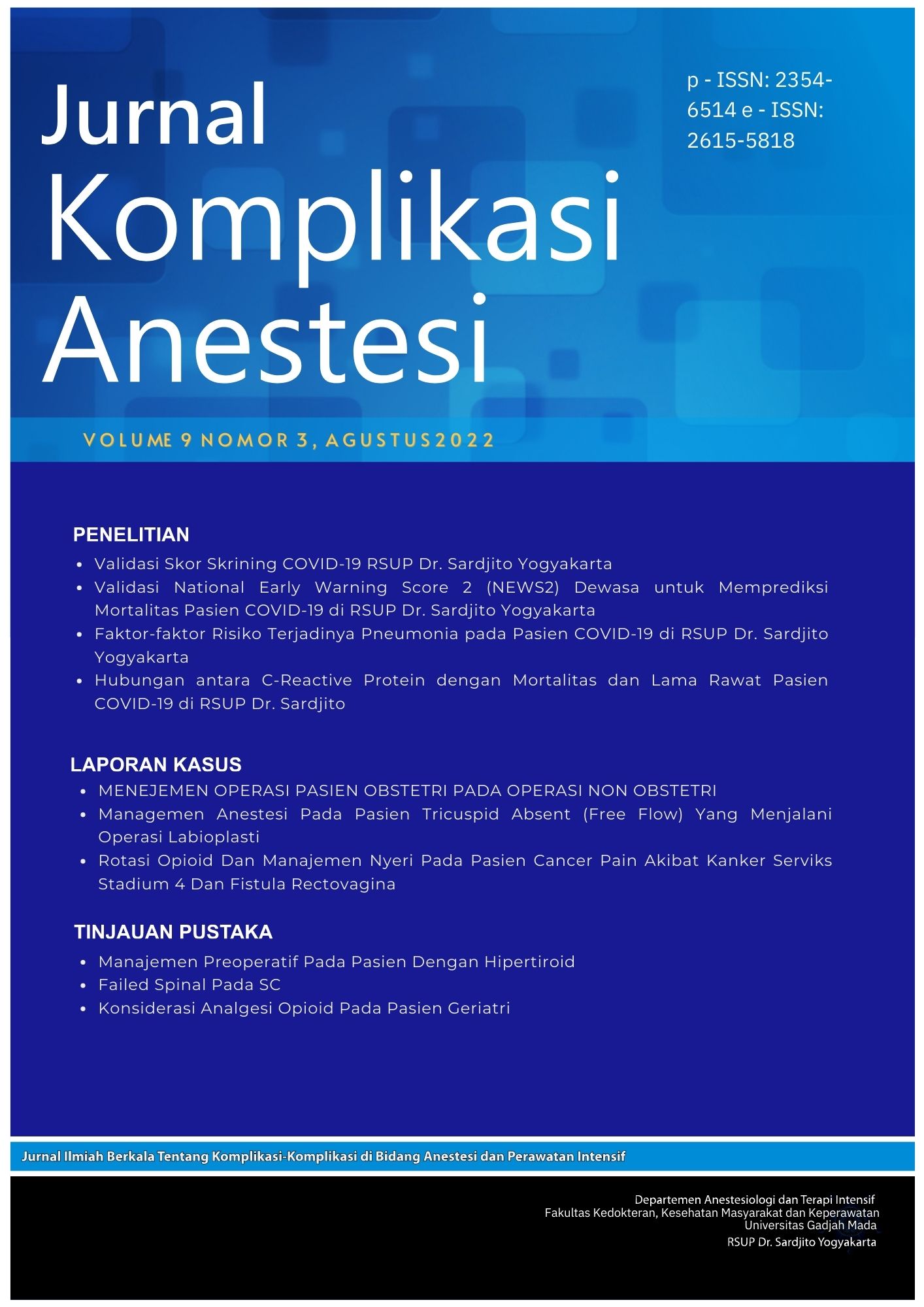Gagal Spinal pada Operasi Sectio Caesarea
Abstract
Subarachnoid block is the most convenient and safe anesthesia to undergo cesarean section. It provides excellent anesthesia, avoids risks associated with general anesthesia and increase level of parturients' satisfaction, associated with low occurrence of intra-operative and post-operative morbidities. It's simplicity to institute, rapid onset of sensory blockage, its reliability, ease of mastering and producing optimal surgical conditions are some of the frequent reasons to choose spinal anesthesia over other techniques. Despite this significant move towards spinal anesthesia, it has a risk of failure reported in the range of 1-17%. Failed spinal anesthesia can be defined as partial or incomplete spinal block within 15-20 min after injection and requiring supplemental analgesia or conversion to general anesthesia. Failed spinal leads to maternal discomfort and it is a cumbersome event for the anesthetist. Management of failed spinal during caesarean section by repeat, sedation or conversion to general anesthesia may negatively impact maternal and fetal outcome. This may result in decreased maternal satisfaction, inadequate pain management, fetal sedation (incases of general anesthesia), suboptimal surgical anesthesia and may also pose to risks of general anesthesia on the parturient. Keywords: Caesarean Section; failed spinal anesthesia; management of failed spinal; spinal anesthesia
Copyright (c) 2022 Calcarina Fitriani Retno Wisudarti, Yusmein Uyun, F uad Cipto Utomo

This work is licensed under a Creative Commons Attribution-NonCommercial-ShareAlike 4.0 International License.
The Contributor and the company/institution agree that all copies of the Final Published
Version or any part thereof distributed or posted by them in print or electronic format as permitted herein will include the notice of copyright as stipulated in the Journal and a full citation to the Journal.

















